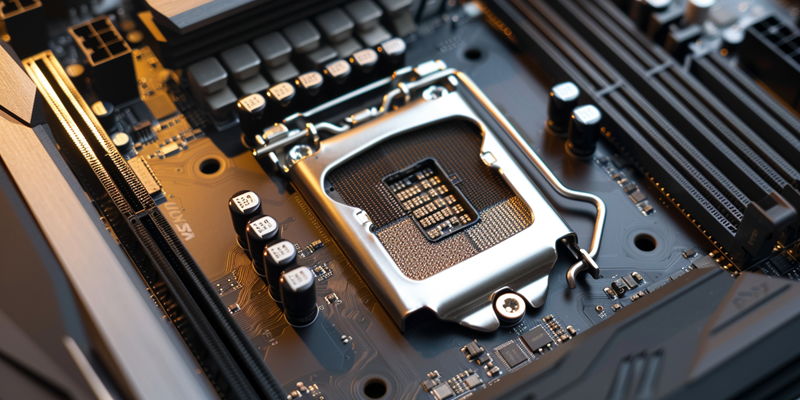Intel’s Arrow Lake CPU lineup stands as a significant innovation within the technology sector, signaling not just a step but a leap forward in the realm of processing power. With anticipation building toward its release in the fourth quarter of 2024, the breadth of the Arrow Lake portfolio—including the desktop-centric Arrow Lake-S and the mobile-oriented Arrow Lake-HX and Arrow Lake-H—is poised to redefine the capabilities of personal computing devices.
Unveiling of Arrow Lake Series
Innovations in CPU Design
Intel’s Arrow Lake-S CPUs exhibit a notable departure from conventional designs as they fuse multiple tiles into a monolithic form. This technique marries the CPU with other critical components, such as graphics and I/O, on a single chip. The implementation of an 8+16 core configuration capitalizes on the seamless synergy between Lion Cove P-cores and Skymont E-cores, promising exceptional multitasking and power efficiency. Untethered from previous designs, the Arrow Lake-S could redefine the conventional expectations for desktop CPUs.
Further reinforcing Intel’s innovative streak, the forthcoming CPUs will also leverage Xe-cores from the cutting-edge Alchemist graphics architecture. The inclusion of these GPU tiles underscores Intel’s commitment to delivering integrated graphics solutions capable of addressing a broader spectrum of computing needs, including gaming and professional applications.
The Rich Variety of SKUs
Intel’s product roadmap reveals a robust lineup of at least 13 varying SKUs within the Arrow Lake-S “Core Ultra 200” CPU family. Spanning from powerhouse ‘K’ series chips to the more energy-conserving 65W and 35W Non-K options, Intel aims to cater to a wide array of user requirements. This strategic diversification ensures that whether it’s for high-performance gaming, demanding creative workloads, or everyday productivity, there’s a tailored Arrow Lake-S CPU designed to excel in each scenario.
Feature Enhancements and Compatibility
Advanced Motherboard Ecosystem
Intel’s Arrow Lake CPUs will be complemented by the concurrent release of the new 800-Series motherboards. These motherboards will not only boast native Thunderbolt 4 support but will also present advanced memory support with capabilities extending to DDR5-6400, assuring users of a high-bandwidth, low-latency experience. Intel, however, is drawing a line in the technological sand by forgoing backward compatibility with DDR4, thus advocating for a generational shift in memory standards.
Socket Design and Longevity
The LGA 1851 socket represents more than just a physical interface for Intel’s Arrow Lake-S CPUs; it embodies a commitment to durability and future-proofing. Designed to support the rapidly advancing spectrum of Intel CPUs until at least 2026, the socket ensures that users can upgrade their systems with confidence, knowing that their investments are safeguarded against rapid obsolescence.
The Importance of No Hyper-Threading
Decoding Performance Implications
Intel has made the intriguing decision to exclude Hyper-Threading from the Arrow Lake-S CPUs, a feature that has become a widely recognized staple for multitasking efficiency. This move raises questions about how Intel plans to uphold, or even exceed, current performance standards.
Expanding into Laptop and High-Performance Markets
The Arrow Lake-HX and Arrow Lake-H CPUs
Shipments of the more mobile-centric Arrow Lake-HX and Arrow Lake-H are slated for 2024, with the subsequent year heralding a broader release. These CPUs are designed to cater to the ever-growing needs of laptop users and the high-performance sector, promising to continue Intel’s legacy of pushing the envelope in portable power and capability.
Competition in the Semiconductor Industry
Intel’s Strategic Positioning
Intel’s Arrow Lake CPUs represent a significant leap in computing performance, shaping the future of technology. Highly anticipated, these processors are scheduled for release in late 2024. The Arrow Lake series includes models for different uses: the Arrow Lake-S for desktops, and the Arrow Lake-HX and Arrow Lake-H for high-performance and standard mobile computing, respectively. These CPUs are set to transform the power and capabilities of personal computers. With cutting-edge advancements, Intel’s Arrow Lake lineup is expected to offer unprecedented processing speeds and efficiency, likely pushing competitors to accelerate their own innovations. The industry is eager to see how these chips will influence computing trends and the development of applications that can leverage their potential. As the release date approaches, both consumers and professionals are watching closely, anticipating the new horizons that Intel’s technology will open in the realm of personal computing.

